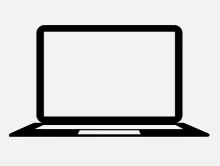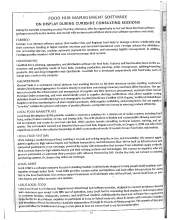As farmers and activists who are deeply committed to both sustainability and innovation, we are happy to find some useful tools on the shelf, and ultimately urge developers to get grounded in the needs of the farmers and eaters, before making another fancy whirly gig.
Existing Apps and Devices
Helpful Apps and Such
- iPads- can bring it into the field with the Otter case, not so great about data entry, but maybe.
- Numbers- An excellent spreadsheet app by Apple inc. for the iDevices and other Apple computers.
- AgSquared.com- not free, costs 5 dollars a month (Johnny's is underwriting the first three months for people.)
- Evernote- synced notes, such as inventory management
- Arduino based robots that are attached to sensors in your greenhouse.
- Mail Chimp- Free for the first 4,000. Tracks who clicks where on your newsletters.
- Planimeter- You walk around the edge of a paddock and it will tell you how big it is.
- Solar Tracker- gives you the position of the sun in the sky, you can track it like a magic wand with your phone. Great for quickie garden specs, for positioning your greenhouse or apple orchard. And for impressing your family as you lay out their victory garden patch.
- SoilWeb by UCDavis and the NRCS- Another app. that’s great for farmers doing assessment of land. Back in the 1930's soil conservation boom (inspired by a horrific dustbowl that reached Washington DC) a total survey of our nation's agricultural soils was undertaken. That data lives on as awkward, but publicly available GIS maps online. It is newly available in app form. Super fun party trick to know what soil lies underneath your feet, or underneath the pavement.
- Square- A little chip that fits into your iphone and lets you accept credit card payment anywhere! But it’s costly, it costs about 2.7 percent of the transaction.
- Localharvest.org helps you find farmer's markets and other sources of local food
- iFarmer- Real time inventory control, an iphone app.
- Carrot mob- Mobbing businesses with customers in order to pressure them to source more food locally, or take steps to make their business more sustainable.
- Crop Planning Software- open source software to plan and manage planning and scheduling of plantings and more. FarmHack Crop Planning entry has links to download program, source code and link to Facebook
Websites for activism.
A CROP SUBSIDY MAP for the entire United States : http://farm.ewg.org/
New Online-based distribution companies:
We have noticed a proliferation on online-based distribution, home delivery, buyers clubs and other ' online farmers markets' start-ups. Indeed it seems there's a new one every day!
Many of these sites are 'tech driven, ' meaning, they are platforms designed by people without much experience in agriculture, foodsystems or food distribution. Some of them are startups with significant investment capital. There is as yet no comprehensive cross-sectoral look at the rates that they are offering to farmers and customers-- nor is there a regulatory body that I can find that monitors this new sector.
Its important to consider the marketplace implication of these companies. Are they exciting, yes. But lets go deeper. Do the erode small grocers? Do the preferentially serve the wealthy with home delivery at unaffordable prices? Do they build strong, reliable markets for farmers and regional producers? Can they help penetrate rural markets where there are no other options to form the basis for a more durable, bricks and mortar store? How do their margins compare to regular 'warehouse-based' distributors? How much does the technology cost them to operate? What about credit card processing fees?
Here are some names:
Gilt Taste
Local Orbit
Local Sprouts
Plovgh
Basis
Greenling
Good Eggs
Fresh Direct
Less Helpful Online Tools:
- Farmville- Super popular online game that makes you pay to populate your homestead with chocolate milk cows. Millions of players. Fantasy Facebook for your avatar agriculturalist. The moral tale: buy more shit, grow yucky corn to make money. This is very lame, but at least you know about it now and won’t be a dork. Deranged+highly commercial format for native human impulse for dominion.
Ideas for Using Existing Technologies:
- Using your mobile phone to make videos, instructional videos for your customer to use in for instance breaking down a bushel box.
- Something to use when you don't have cell phone reception, you do work offline, then when you come to the service it synchs up. (Lots of folks don’t have service in the field)
- An accessible visualization of the degradation of the local farm economy.
- The customer needs to be able to see where investment is needed in the food infrastructure. If Slow Money could figure out the right place to invest.
Apps and Devices Farmers Need
- A way to synch excel with google calendar for daily task allocation.
- Where could you get get funding to set up instructional/ training videos for your staff.
Other Helpful Compilations of Tech Resources/Ideas
- Information & Communication Technology Tools & Strategies (from larger Food Systems resource guide): http://guides.library.cornell.edu/content.php?pid=84833&sid=639443#2071950


Comments
Good start
In some cases, more detail is needed.
* Ipad: I have found that the screen is impossible to read in daylight -- difficult in full shade. This is true for the iPhone too. Larger fonts, and doing work that requires these tools on overcast days or dawn/evening helps. But this makes the tool less useful. (In general a screen that works from reflected light instead of back lighting is much easier to use in daylight.)
* Square-Up -- big win here. While they charge more (2.25 to 2.75%) than other credit card brokers, there is no monthly fee. You would have to take in more than 120K/year by credit card before a conventional account is a win. You need an internet connection to run a charge.
* Ag-Squared. Tried it when it was in Beta. I saw this as having a lot of potential for small scale farmers that grow lots of different crops. E.g. Truck farmers.
Other stuff
* Google Sheets (part of google apps) I run my tree farm with a 12 tab google spreadsheet: It has raw inventory, inventory summary, list of trees, vendor orders, customer orders. Big win Same file can be open on multiple computers. I can take an order on the phone, mark it in red. Laura can enter it into the accounting, remark it in black, all at the same time. If she has a question, she marks in it blue. Means I have to deal with it. Requires full time internet connection.
* Filemaker Pro (Mac, Windows, iOS, Android?) This is an expensive solution (about $500) and requires that you learn how to program filemaker. It's very mousy. If you use Microsoft Access you can learn FMP. The Big Win is the ability to generate an iPad/iPhone app. This app can be used disconnected from the internet, and it will reconnect when you come home. This has good potential for inventory, for time management (E.g. mark when employees arrive/depart)
* OmniFocus (Mac, iOS) Todo list on steroids. Not quite a full blown project manager. Lists can have sublists. E.g. Projects can have "Woodshed" "Greenhouse" "Powerline"
Then under Powerline "Clear cutline" "Get poles" "Get Wire" "Dig Holes" "Put up poles" "String Wire"
Any given task in a list can be given a priority. A given list can be a mix of things that have to be done in sequence (Get poles has to come before put up poles) or in parallel (Doesn't matter if buying poles or wire come first) Tasks can be given due dates/alarms. Tasks can also be given a location, and it will remind you of things when you get close to them. Handy for shopping tasks. Tasks can be one shot, or recurring. E.g. Weed survey every two weeks.
Available as a Mac App too. The desktop version is somewhat more capable -- you can create complex dependent task lists on the desk that you can't on the iPhone. But you can still read/checkoff them on the phone. Last time I looked the desktop app was $80, the iOS app was $20
Gotchas
In many cases apps are cloud based: You need an internet connection to use them. In much of western Canada cell coverage in rural landscapes ranges from non-existent to poor. At my farm I get 1 or 2 bars most of the time. This will allow phone calls, but it takes 2 minutes to connect and check my email.